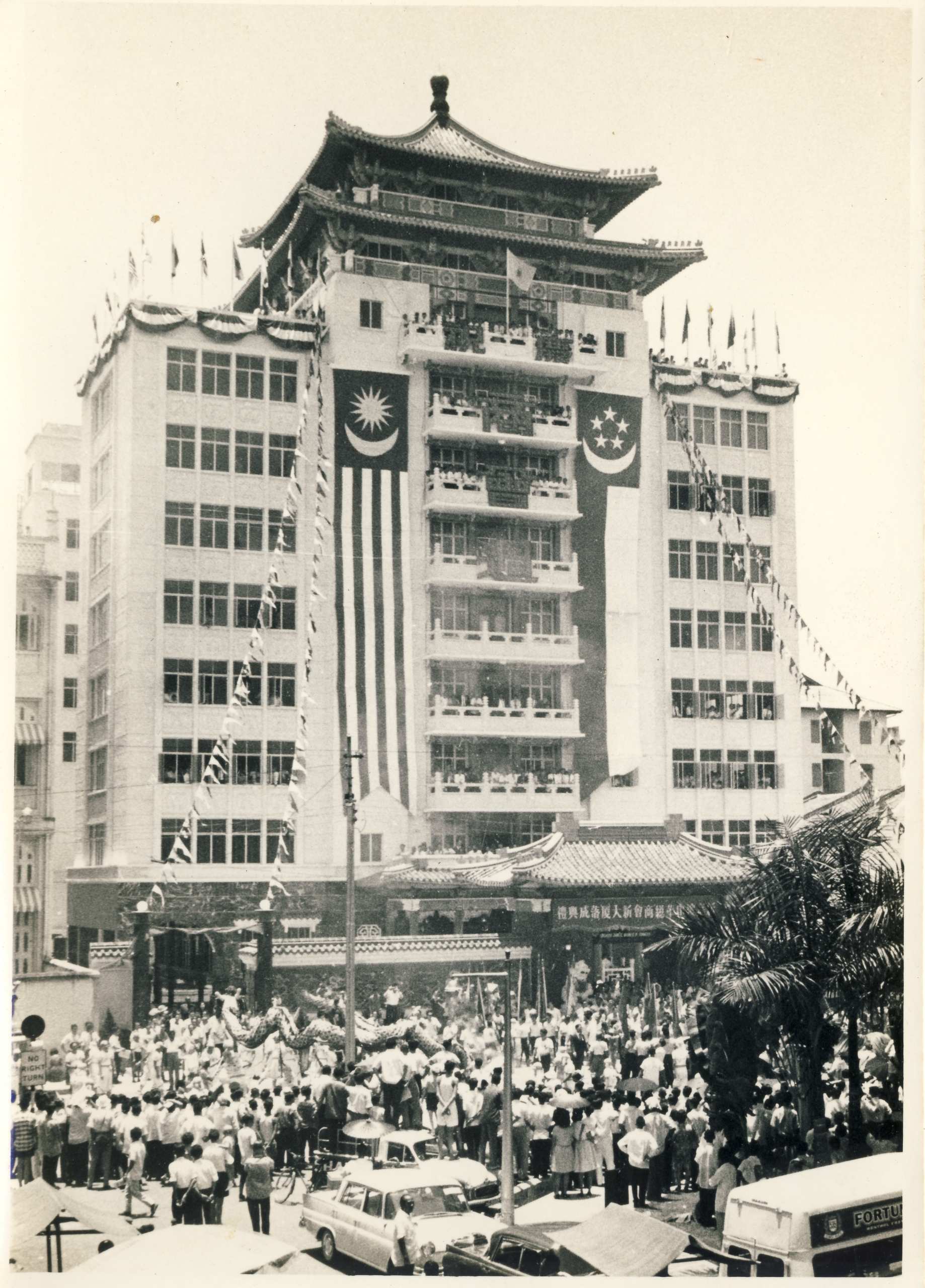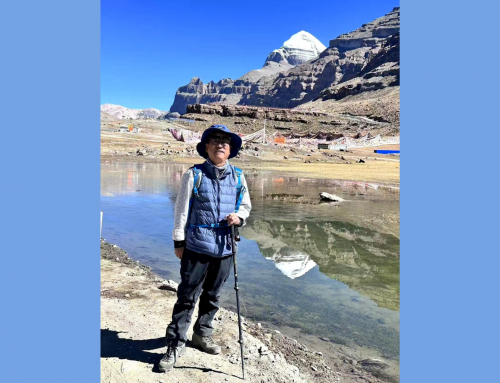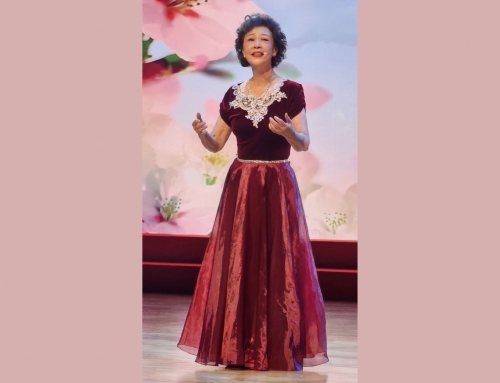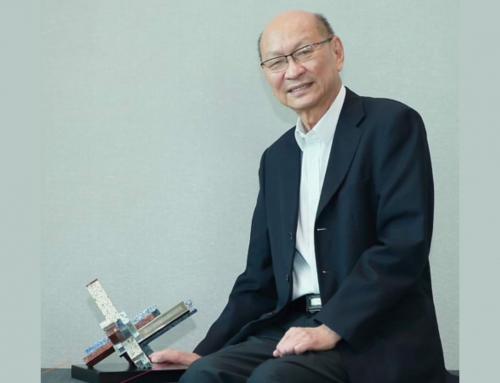和衷共济、勇于开拓的族群:新加坡华族
The Chinese contribution to Nationhood
文·朱添寿 图·编辑部
我们都知道,新加坡近代史,是从1819 年莱佛士登陆开始。自开埠以来,这块英国殖民地,就迅速发展成为当时东南亚一个繁荣的自由贸易港口。它作为一个经贸中心,很快地就吸引了来自不同地域的移民不断涌入,与此同时也带来了他们的语言、文化和风俗习惯。多元的民族和文化习俗,在这小岛上交集、融合,相互影响和发展, 而其中华族先贤在新加坡自开埠、殖民、自治、建国初期到今日,一直都扮演着举足轻重的角色。
移民 – 公民
19世纪末的中国内忧外患,人民经历了鸦片战争、太平天国起义、民不聊生,纷纷南下寻找生路。飘洋过海落足到这个弹丸小岛的人,主要来自东南沿岸的福建人和广东人。 华族成为新加坡最大的移民族群。这些华裔祖先初到新加坡时,人虽然远在南洋,心里却还是向着远在中国的家乡和亲人。
早年的这一批各族群体,说着不同语言,有着不同文化。他们来到异乡,受着英国政府的管辖,但却得不到殖民政府的照顾,生活很不容易,各组群很快就明白团结才是力量。当时的华裔移民多数从事劳动性的工作,俗称“苦力”。他们背井离乡,以一股“自力更生,坚毅不拔”的精神,面对并克服了种种困难。为了生存,他们依着“血缘、地缘及方言”的关系,成立了一个个的宗亲组织和会馆,相互照应。在那时候,除了掌权的英国人,其他种族的权益不但不受重视,在关键时刻,往往都是被牺牲的一方。这层厉害关系在经过“二战”之后,很多人就更明白到这个道理。
随着二战的结束和中国内战局势的不稳定,许多人放弃了回乡的想法,并把家人接来,在这里落地生根。这些华裔移民渐渐适应了这里的生活,对这块土地有了感情。华族的领袖们,经过多方努力,于1957年,新加坡的华人社团成功向英国政府争取,让当时在这块土地工作多年,有所贡献的合格移民,登记为新加坡公民。这次受益的不单只是华裔,连带其它种族也纷纷成为新加坡的第一代公民。他们在此时才真正有了公民的身份,对这片土地有归属感,他们积极参与国家建设,掀开新加坡历史性的一页!
国民服役
我国的建国历程,可以说是无助与无奈。在1965的8月,平地一声雷,新加坡被迫脱离马来西亚,在毫无准备之下,一夜之间成为独立自主的国家。百废待兴的新加坡政府意识到国家不可以没有军队,于是立即成立了新加坡武装部队。1967年,新加坡国民服役法令成立,征召第一批国民服役新兵入伍。当时的华人有着旧思想,“好男不当兵,好铁不打钉”,对当兵有极大的反感。这时,华人领袖领挺身而出,大力支持国民服役,让人民了解“国家兴亡,匹夫有责”的道理以及全民皆兵的防卫重要性,奠定了我国这50年来的国防根基。
重视教育
19世纪初的新加坡不过是英国政府很多殖民地之中的一个,英国政府对新加坡的教育政策,只在乎培养一批能为他们服务的当地文员,而当时官方用语都是以英文为主。从中国移居新加坡的华裔族领袖,担心因久居异域,子孙们会渐渐忘本,逐渐与中华文化脱节, 他们也极具远瞻,知道教育脱贫的道理,于是便成立不少华校,传承华文与华族文化。为了进一步提升本地华文教育的水平,华人领袖登高呼吁,全华社动员起来,上下同心,并获得周边各地华人的大力响应和支持。筹款设立了南洋大学,(今天南洋理工大学的前身)为东南亚的华族子弟,提供华文教育的最高学府。
新加坡独立之后,英国政权虽已离开新加坡,但在国家制度上,新加坡承继了英式行政与法律制度。在教育制度上,政府明白英文在国际市场上的重要性。在行政上,政府认为民族融合的先决是要能使用同一种语言沟通,才能避免隔阂,而这种语言不可以偏袒某一个民族。考虑到英语在国际上的实际用途,我国虽然在宪法上规定英语、华语、马来语及淡米尔语都是官方语言,但在社会上,英语却是主要的工作语言。
自1987年起,新加坡逐步统一了学校教育的语文源流,所有学生不分种族都以英语为“第一语文”,而华语、马来语和淡米尔语都属于第二语文。这项政策的结果,是学校已经没有华、英校之分,渐渐造成重“英”轻“华”的局面。面对繁重的课业,和基于现实职场上英语的强势,很多家长决定让孩子“放弃”华文,专注在英语和其他科目上。
从90年代到这世纪初,华文在新加坡经历了近20年的低潮期。然而,新加坡的华人社群对保留新加坡的华族文化及推广华语的学习和运用,一直都不遗余力,坚持做中流砥柱。近10年来,民间组织如中华总商会,宗乡会馆联合总会,文化团体,会馆属校,加上政府资助支持的组织和机构如通商中国,华社自助理事会,新加坡华族文化中心,新加坡华乐团,华文报集团,戏曲学院等,都积极地开办课程,举办座谈会、演出、展览,出版刊物,群策群力,把华族文化和传统价值观,灌输给我们的下一代,包括新移民,让大家在共同的理念下,继续为国家做出贡献。
施医赠药
早期的新加坡居住和卫生条件差,尤其是从事劳力工作的劳苦大众,得不到应有的基本医疗照顾。当时很多富裕的华族领袖,秉着“取之社会、用之社会”理念,决定慷慨解囊回馈社会,除了兴办教育,也联合其他华商兴建医院,如同济医院,广惠肇方便留医院,中华医院、大众医院和善济医社等,一直就是采取施医赠药或是收取象征式费用的形式,以济世救人的精神,为广大民众,尤其是低收入者看病施药。这些慈善医疗团体,乐善好施,受益的群众不分种族,于政府的医疗体系之外,在辅助百姓的健康方面作出贡献。
商贸
19世纪成立的中华总商会,凝聚各界的华商,在商场上因为经济效益的关系而合作。这些华商因为来自同一块土地,早期在商会的体制上,有帮派的配额。但先贤们也都承继华人传统文化的思维,体现出同舟共济精神,也明白求同存异,群策群力的重要。建国后,商会逐渐从狭小的帮派利益,推广到整个华商群体利益的考量。面对世界经济的变迁,当新加坡经济也面对转型的时候,政府为了更有效推动经济,推出政策,华商也尽力配合,过程中肯定也经过许多痛苦与牺牲。因此,这50年来,新加坡的经济腾飞,虽然是政府政策推行的成功,但华商在这方面的顾全大局,大力支持,积极转型,大胆走出国外,政商配合,达到一个互利互惠的效果,对我国取得的经济成就以及国民生活水平的提高,的确也是功不可没的。
本土文化艺术
蕉风椰雨的东南亚,令人神往的艺术是东西方文化融合的结晶。这一地区经过上百年来欧洲殖民地政府的管辖和影响,造成了这里的人民基本上能接受多元的宗教信仰并存的开放与包容心态,为这里的艺术家提供了创作的热土。往日的新加坡位于东南亚水路交通的中枢,今天更是国际航运交通和经贸的世界级的大都会,东南西北的艺术,很自然地在这里交汇。我们多年来一直在民族“个性”和“国际化”思潮中碰撞,激荡,擦出火花。当代艺术家们吸纳西方式的艺术语汇和手法,但诠释的形象元素仍属于东南亚的地缘性本土文化,他们永远在寻觅自我,坚守着属于本土民族的精神家园,正是因为这样,东南亚的艺术即便是被置入国际化的大环境里,仍然灿烂辉煌。
以华族文化为例,无论是书画、诗词、戏曲、音乐、舞蹈、戏剧等传统艺术,还是春节、清明、中秋等传统节庆,或嫁娶生死、饮食健保等传统习俗,都是新加坡文化的重要组成部分。上世纪中,新加坡的几位先驱画家,以独特的艺术远见,结合了中西画法,着力描绘东南亚的风土民情。他们的画风,可以说是后来“南洋画风”的滥觞,影响了新马地区画家的创作风格。
众多的民间艺术和文化团体自发的不懈努力,以及政府和商界的大力资助,为我国华族文化的传承和推广提供了一个土沃水足,遍地开花的文化艺术园圃。为了孕育本地华族文化的健康发展以及从大中华文化中汲取适合我们的养分,我国政府在近几年来,对华族传统艺术的推广,更是在人力、财力资源方面,给予大力的支持。而我国的年轻一代艺术家,也在国际艺术舞台上,绽露骄人成绩,为我国增光。
结语
在今年我们欢庆建国50周年大庆之际,简略地把我们华族先贤在建国过程中,所经过的艰辛历程和付出的努力,稍作疏理,以古鉴今,希望鼓励我们的下一代,知道目前的繁荣和升平,是先辈几经打拼,和各族求同存异,共同为我们自己的国家,树立国家精神,创造财富。在我国建国以前,南来的文化人,虽然还不能成为国民,但他们却能够在各自的领域,关心这里的民生,融入这里的生活,他们虽然还是心系着北方的家乡,但是却已经着眼于本地意识,艺术作品呈现出本土风情,本土色彩,本土意识。这批文艺先锋,为我们打下了日后发展本土文化的基础。在建国后的50年历程,我国的华族,应该具有扎根于此,生于斯、长于斯、死于斯的爱国精神和关怀自己国家的情怀,在各方面继承先贤的刻苦耐劳,自力更生,坚韧不拔,融洽共存的传统,继续为我们的国家,作出贡献。
(作者为新加坡华族文化中心总裁)
From a seedling to verdant foliage
It is common knowledge that Singapore’s current history began in 1819 with the landing of Sir Stamford Raffles. From its founding, this British Colony had speedily developed into one of South-east Asia’s busiest entrepot ports. Being a trading centre, it quickly attracted a large variety of immigrants constantly moving in. They brought along their dialects, customs and culture. The diverse ethnicity and cultural practices, thrown intimately together in a small island, influenced each other whilst they developed. In particular, the early Chinese settlers through all the phases from port to Colony, from self-government to birth of Nationhood till today had always played a key role.
From Immigrant to Citizen
Towards the end of the 19th Century, China faced internal strife and external incursions. The people, beset by The Opium Wars and the Tai Ping Rebellion were uprooted and dispersed southwards to survive. Drifting across the South Seas to finally set foot on the miniscule island were the people from Fujian and Guangdong Provinces. Chinese eventually became the largest immigrant community. These Chinese forebears even though whilst living in Singapore far away in Nanyang, still had their hearts with families back in China.
The early settlers spoke diverse dialects and were from differing cultures. Even as they were settling down, they were subject to British rule and not receiving any welfare from the colonial government. Life being very difficult, they therefore congregated in unison for strength. Chinese immigrants formed the bulk of the labour force, known as “coolies” Having left home and village, they plucked up a spirit of self-reliance and never-giving-up; overcoming all difficulties encountered. For their survival, they relied on connections of blood relationship, native village origin and dialect; setting up individual clan organisations and associations for mutual help and care. The situation then, with power in the hands of the British, was that the interests of the locals were ingnored and even sacrificed when under critical circumstances. After the end of the Second World War, the people clearly understood these discrimination and injustices.
With the ending of the War and the great upheavals in China, many gave up the idea of returning to China and arranged for their families to come over and settle down here. The immigrants then gradually adapted to the life here and also nurtured a fondness for the land. The leaders of the various Chinese communities put in a concerted effort to negotiate with the British government and in 1957 successfully secured for most Chinese, who had worked and made contributions, to be registered as citizens of Singapore. The benefits of citizenship was not limited to the Chinese but was offered to all other races as well, thus forming the first generation of Singapore’s own citizens. From then on, having a clear status of citizenship, a sense of belonging was cultivated and they heartily participated in all aspects of building a Nation. Hence, opening a new phase in Singapore’s history.
National Service (NS)
The process of our nation-building can be best described as one of “no-help” and “no choice”. In August of 1965, in a sudden outburst of events, Singapore was booted from Malaysia, caught unprepared at the suddenness of being an independent country, the resourceful government recognized that a country cannot be without an army. Accordingly, the Singapore Armed Forces was set up. In 1967, the National Service Act was passed and the first batch of National Servicemen were inducted. The traditional Chinese thinking then was “good men do not become soldiers; and good steel do not become nails” – an anti-soldiering sentiment. The community leaders then took action to show support for NS and manifesting the importance of the adage “ A Nation’s well-being is the responsibility of all men”. This laid the foundation for the 50 years of National Defence.
Importance of Education
From the 19th century onwards, Singapore being merely one of the many British colonies, the British government’s education policy is to provide just sufficiently educated manpower to serve their needs, with English being the only language focused on. The Chinese community leaders, worried about the great separation in time and distance from China will cause future generations to gradually forget and lose their original Chinese culture. In order to enhance the standard of local Chinese education, they raised a resounding call for all Chinese bodies to come together. This even spread to the surrounding countries for the Chinese there to rally and support the call. The funds for and the formation of Nanyang University were realized, thus establishing for the whole Chinese fraternity in South-east Asia, an institute of higher learning. (Nanyang University is the forerunner of today’s Nanyang Technological University).
After independence English was retained as the language for administration and judicial purposes, even with the departure of the British. As an educational policy, English was taught as the government realised the importance of English in the international markets. For Public administration the government recognized that racial integration requires a common lingua fraca and which does not emphasis the language on any racial groups. Then English with its international usage, was considered the most practical. Even though the Constitution guaranteed that English, Chinese, Malay and Tamil as official languages, in society English became the main working language.
From 1987 Singapore gradually streamlined the language of transmission in schools. All students, regardless of race, used English as the ‘first’ language with the corresponding Mandarin, Malay and Tamil as ‘second’. The result was a gradual merging of the English – Chinese schools divide; slowly English replaced Chinese in major subjects. In deference to the employment requisites, parents also relinquished the idea having their children studying Chinese.
From the 1990’s till now, Mandarin in Singapore has been in a very “low key” position. In spite of this, Chinese society continued to carry out Chinese cultural activities, Mandarin lessons and usage – never letting up their efforts and enthusiasm. In the last 10 years or so, many communal organisations like the Singapore Chinese Chamber of Commerce and Industry, SFCCA and clan associations together with government-supported organisations like Business China, CDAC, Singapore Chinese Cultural Centre, Singapore Chinese Orchestra, Chinese press organisations, and Chinese Opera Institute, etc putting concerted effort in holding Forums, lessons, performances, exhibitions and publications – all aimed at transmitting Chinese culture and values to our next generation, including new citizens. Thus, building a common consensus in Nation-building efforts.
Health and Medical care
In early periods of Singapore living and health conditions, especially amongst the largely hard labouring populace, did not receive the proper attention. At that time, many wealthy Chinese communal leaders adopting an axiom of “From the Society, Used for Society” decided to generously contribute back to Society; besides caring for education also combining with businessman to build hospitals, viz Thong Chai Medical Institution, Kwong Wai Siew Free Hospital, Chung Hwa Free Clinic, and Public Free Clinic, etc. All these offering TCM consultation and Herbal prescriptions, charging just nominal consultation fees, in a spirit of universal care and public welfare especially for the low income groups. These charitable medical institutions offered a welcomed source of medical care for all races and operating outside of the government’s medical administration made great contributions to public healthcare.
Trade and Commerce
The Chinese Chamber of Commerce, established in the 19th Century, was to gather all Chinese businesses so as to set up a co-operative economic environment. In its early days the Chamber was administered on a clan-separated basis. Yet, the early founders also accepted the traditional Chinese wisdom of “rowing in the same direction” and importance of “unified strategies with unified strengths” to reach common objectives. After Independence, the Chamber gradually dissolved its clan-based ways and moved towards an all embracing beneficial Chinese business mode. Whenever Singapore’s economy faces the World’s economic vicissitudes, the Chamber has invariably strived to co-operate with all the Government’s economic measures, in spite of painful sacrifices in the process. Consequently, in the last 50 years when Singapore’s economy has taken off with the Government’s successful policies, it was also the astuteness in all aspects of Chinese businesses, boldly venturing world-wide and unwavering support and co-operation between Government-and-Business that resulted in mutual fruitful benefits. Our Nation’s economic developments and attainment of a high standard of living is an indelible mark of achievement.
Local Culture and Arts
The tropical idyllic image of South-east Asia has offered a melting pot of East-West cultures. The colonial rule throughout the region for more than a century has instilled an acceptance of differences of religious beliefs and high tolerances. This has provided a fertile soil for local artistes. Singapore being centrally located at the cross-road of S.E.Asian seaways and later as the hub of international air routes, means a convergence, flourishing and exchange of cultures from all the world. In many years of our ethnic ‘individuality’ and ‘internationalisation’ our thoughts have collided, met with turbulence and created bright sparks. As our artistes absorb the milieu of Western artistic language and forms, the image of their works still preserved a South East Asian native cultural identity. In their never-ending search for individualistic creativity, they have preserved their native-born culture. Because of this, South East Asian arts has been established as a shining beacon in the international firmament.
As for Chinese culture, no matter in literature & art, poetry & prose, musicals & music, dance & theatre; or festivities like Lunar New Year, Qing Ming, Mid-Autumn; or traditional rituals in marriages, births, deaths and feastings – they all form an important part of Singapore culture. In the last century, several artists pioneered a Sino-Western art-form which stylistically incorporated S.E. Asian native flavors. This group of artists was later credited with establishing the very influential “Nanyang School” throughout Singapore and Malaya.
Many artistic and cultural organizations have developed vigorously with strong support from both Government and businesses. To provide a rich environment for the development of Chinese culture and to nurture a healthy and rich local Chinese cultural establishment, the government has in recent years provided strong financial and manpower resources. Our young generation of artistes has achieved enviable results on the international stage, doing Singapore proud!
Conclusion
As we celebrate 50 years of Nationhood, this article briefly lists our Chinese forebears’ labours and diligence in the nation building process. It is hoped that the future generations will remember that the today’s prosperity and well-being are the results which our forebears, together with other races made possible. Before Independence period, they came south and assimilated the life here; and although still thinking of their homes to the north, they took care of living here and made good their livelihoods. In this process, they also enriched local arts, enhanced their colours and adapted their thoughts, laying a foundation for our generation. After 50 years of Nation building, local Chinese has developed a deep sense of patriotism and loyalty for the country – to be “born here; live here; die here” thus perpetuating the undying perseverance and diligent spirit of our ancestors in building the Nation.

6.1990年,由宗乡总会主办的“华人传统展览”盛况空前,前来观赏者达50万人次

5.中华总商会新大厦于1964年举行落成典礼
-scaled.jpg)
5.中华总商会协助灾民赈灾(1956)
-scaled.jpg)
3.南洋大学牌坊(1955)

3.1986年成立的新加坡宗乡会馆联合总会与其他社团一道,不遗余力地推广华族文化

3.1956年3月15日,由陈六使和其他代表主持了南大的升旗仪式。
-scaled.jpg)
2.第一次国庆阅兵 (1966)

1.宁阳会馆是新加坡最早的华人会馆,由曹亚志创立







